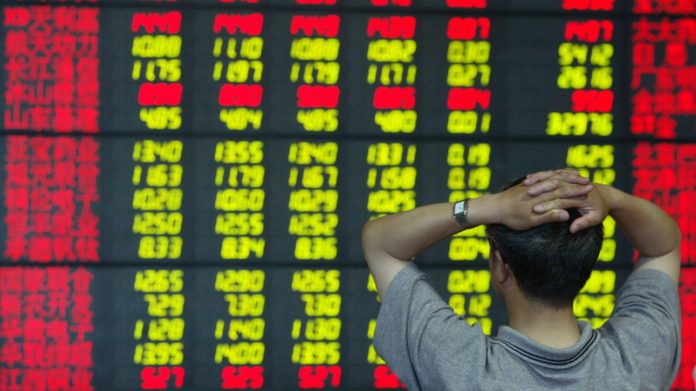Stocks saw a slight uptick this morning as traders digested the most recent batch of corporate earnings, with the Dow attempting to extend its winning streak to a record 10 sessions.
The Dow and Nasdaq Composite both rose 0.2% while the S&P enjoyed a modest gain of 0.3%. The last time the Dow closed 10 positive sessions in a row was all the way back in April 2017.
Market volatility was the name of the game this morning as portfolio managers recalibrated their holdings ahead of a significant Nasdaq-100 rebalance, set to take effect Monday. Additionally, a substantial volume of index and stock options are slated to expire this afternoon.
According to Goldman Sachs estimates, the market is bracing for an options expiration (OpEx) worth over $2.3 trillion, a record for July. This includes $500 billion notional of single stock options at the close and $1 trillion in index options at the open.
Having weathered substantial overwrites for two months consecutively, Goldman’s volatility desk noted that dealers would end up being “long right tails and relatively clean (which might as well be short) left tails.” In layman’s terms, exposure is heavily call-biased. The S&P’s recent rally reflects this.
While this typically signifies a potential hit for the VIX, Goldman’s Gillian Hood points out that the average realized move this earnings season has been +/-4.6% versus a +/-3.6% implied move 5 days prior to earnings. This 1% differential is significant, suggesting that the VIX may be substantially underpriced.
Notably, the last time stocks outperformed their implied moves by such a margin was in Q3 2008, further fueling the speculation that the market is vulnerable to downside shocks.
These observations bolster the increasingly popular sentiment that volatility is grossly undervalued.
However, the corporate earnings landscape remains the focus of traders, especially after a particularly busy week of quarterly results. CSX, the transportation behemoth, saw its shares drop by 5% due to lackluster results, while American Express also suffered a 3.6% fall.
So far, earnings season has been a mixed bag. Although 75% of the S&P 500 companies that have reported thus far have surpassed analysts’ expectations, this beat rate lags behind a three-year average of 80%. Keep in mind, too, that Q2’s lowball estimates were down 7% year-over-year, suggesting that earnings are worse than the 75% beat rate implies.
That’s part of the reason stocks have been so turbulent over the last few sessions. While the Dow gained nearly 164 points or about 0.5% yesterday, both the S&P 500 and Nasdaq Composite fell around 0.7% and 2%, respectively.
Greg Bassuk, CEO at AXS Investments, commented on the current market conditions, stating:
“The mixed broader indices are really reflective of the mixed earnings and economic data that’s come out. Beyond Dow components, we’re seeing — across industries — more selling pressure based on these earnings results.”
With the week about to close, the Dow and S&P 500 are set to register weekly gains of about 2.3% and 1%, respectively. The Nasdaq, on the other hand, would close only 0.4% higher.
But will stocks – lagging tech names included – continue higher still?
“So where we are right now, we are resting after the massive move over the course of many weeks,” wrote Ken Mahoney, CEO of Mahoney Asset Management, reflected on the current market status in a note.
“A lot of stocks were creating and still are creating bases to break out higher from. No one could believe their eyes after being so conditioned to 2022’s nasty selling conditions when this market gained steam again.”
A runaway bullish trend and a buried VIX have given traders reason to be wary. The theme of the last few months, however, is to favor the “pain trade,” where traders don’t want markets to go.
Bank of America’s Fund Manager’s survey showed that money managers are still 60% bearish long-term. The pain train still points higher, and it would especially be painful for fund managers looking to short the recent peak.
That’s why, even if stocks do end up closing lower today, the S&P might only be gearing up for its next blast upwards, partially because that’s exactly what professional traders don’t want.









